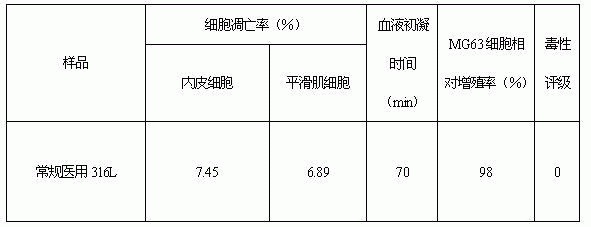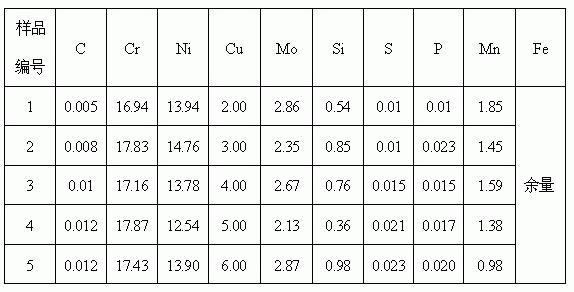Method for reducing incidence of in-stent restenosis and special stainless steel material thereof
A stent material, stainless steel technology, applied in stents, medical science, surgery, etc., can solve the problem of appropriate dose half-life, achieve the effect of reducing restenosis in the stent and the incidence of restenosis
- Summary
- Abstract
- Description
- Claims
- Application Information
AI Technical Summary
Problems solved by technology
Method used
Image
Examples
Embodiment
[0022] Table 1 Chemical composition of 316L type copper-containing stainless steel (weight%)
[0023]
[0024] Flow Cytometry:
[0025] The apoptosis rate of 316L copper-containing stainless steel on endothelial cells (HUVEC) and vascular smooth muscle cells (VSCMs) was measured by flow cytometry. This method can objectively evaluate the effect of copper-containing stainless steel on the proliferation of HUVEC and VSCMs. First prepare the extract, according to 3cm 2 Add the culture solution containing 10% fetal bovine serum at a ratio of / mL, immerse the stainless steel sample in the culture solution, and then let it stand in a place containing 5% CO 2 Store in an incubator at 37°C and 95% humidity, and collect the precipitate after 96 h. The cells tending to confluence were collected, resuspended by blowing and blowing with 0.25% trypsin-containing culture medium, and the resuspended cells were plated in five 6-well plates, one plate for each group. After 24 hours, the ...
PUM
 Login to View More
Login to View More Abstract
Description
Claims
Application Information
 Login to View More
Login to View More - R&D Engineer
- R&D Manager
- IP Professional
- Industry Leading Data Capabilities
- Powerful AI technology
- Patent DNA Extraction
Browse by: Latest US Patents, China's latest patents, Technical Efficacy Thesaurus, Application Domain, Technology Topic, Popular Technical Reports.
© 2024 PatSnap. All rights reserved.Legal|Privacy policy|Modern Slavery Act Transparency Statement|Sitemap|About US| Contact US: help@patsnap.com










